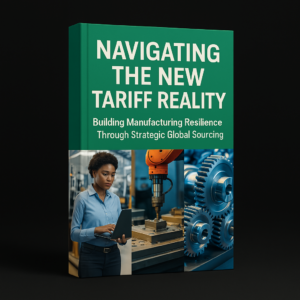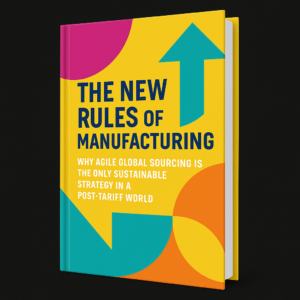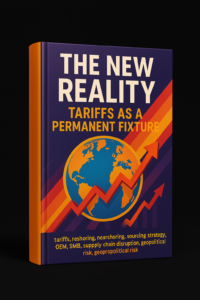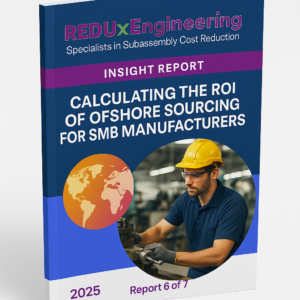
For many manufacturers, managing a vast network of suppliers has become a complex, time-consuming task. Supplier proliferation – while offering variety and redundancy – often leads to inefficiencies and hidden costs. Research by Spendesk in 2024 found that SMBs have on average 9× more suppliers than employees (median ~800 suppliers) and use only about 25% of them regularly. This indicates a long tail of rarely used vendors adding administrative burden with little benefit. This guide explores how companies can streamline their supplier base, improve vendor relationships, and even leverage managed services to handle complexity, ultimately achieving a more agile and cost-effective supply chain.
The Hidden Costs of Complexity:
Every additional supplier a company manages incurs costs beyond the price of parts:
- Administrative Overhead: Each supplier means setting up accounts, negotiating terms, issuing purchase orders, processing invoices, managing payments, and maintaining data (contact info, banking details, etc.). A study in Europe estimated that each active supplier can cost a business around £855 per year in management overhead. Multiply that by hundreds of suppliers, and it’s a significant expense in terms of procurement staff time and systems.
- Quality and Performance Variability: With a large supplier base, performance is uneven. Some vendors excel, others chronically underperform. It becomes difficult to enforce consistent quality or on-time delivery standards across so many partners. Supplier scorecarding efforts get diluted. A few “bad apples” can consume disproportionate attention (expediting late orders, resolving quality problems).
- Lost Volume Leverage: Spend is spread thin. For example, if you buy $1M worth of sheet metal parts but split it among 10 small fab shops, none of them see you as a big account, and you miss out on volume discounts. Consolidating that spend to 2–3 key suppliers could strengthen your bargaining power and yield better pricing or service (as you become a more important customer to them).
- Supply Chain Risk: Ironically, having too many suppliers can increase risk. It’s harder to monitor each one’s financial health or capacity. You might miss warning signs of a small supplier going under or failing to invest in new tech. In contrast, deeper partnerships with fewer suppliers mean more transparency and mutual dependency, reducing surprises.
Strategies to Simplify and Streamline:
- Supplier Base Rationalization: Conduct a Pareto analysis of your suppliers. Identify the critical few that account for the majority of your spend and the long tail that contributes minimally. Often, companies find that 20% of suppliers account for 80% of spend (and an even smaller core, say 5%, might account for 50%). Conversely, you may have dozens of suppliers that you use for very small, infrequent purchases. Work to eliminate or consolidate those where possible. For instance, if five suppliers all provide similar hardware (nuts, bolts, small fittings), consider consolidating to one or two that can supply the full range. This can cut down the count significantly without impacting your supply.
- Preferred Supplier Programs: Establish “preferred” or strategic suppliers for key categories. By awarding a larger share of business to a few suppliers and perhaps signing longer-term agreements, you create a win-win: the supplier gets committed volume; you get simplified sourcing and often better terms. Ensure these preferred suppliers are capable of scaling to meet your total demand in that category (or have a backup second source at most). Many firms successfully reduce complexity by developing one primary and one secondary supplier per commodity, instead of five or six interchangeable ones.
- Vendor-Managed Inventory (VMI): For commodities like fasteners or electronics, vendor-managed inventory programs can offload a lot of purchasing transactions. Under VMI, a supplier keeps stock on site at your facility or nearby and replenishes based on your usage. You pay as you consume. This can collapse hundreds of POs into one periodic invoice and shift day-to-day stock monitoring to the supplier. It effectively reduces the “active management” needed for that supplier and ensures you’re not juggling many small orders.
- Outsource Procurement of Non-Core Items: A growing trend is using procurement service providers or manufacturing consultants to handle sourcing of a broad set of parts. This is analogous to hiring a general contractor: instead of you directly managing 50 suppliers, the service manages them and gives you one interface. REDUx Engineering’s model, for example, allows clients to procure a wide range of components through one consolidated channel. The client specifies what they need, and the managed service handles finding and managing the best-fit suppliers (often offshore), quality control, logistics, etc. The client gets parts delivered to spec, and a single consolidated invoice, effectively reducing their supplier count and management effort dramatically. This approach works especially well for SMBs that don’t have large procurement departments – it’s like extending your team with external specialists, while simplifying your vendor list.
- Integrated Supply Partnerships: In some cases, you can work with a larger supplier who can provide multiple types of items. For example, a large contract manufacturer might be able to produce sheet metal parts, PCB assemblies, and cable harnesses under one roof (or one corporate umbrella). By shifting multiple part categories to that one partner, you replace several supplier relationships with one broader one. Caution: ensure the partner truly has strength in all those areas, or you risk quality issues. But many large manufacturing service companies do offer multi-process capabilities, which can simplify your supply chain if leveraged.
- Digital Supplier Management Tools: On the operational side, investing in better tools (software) can mitigate complexity by automating and tracking interactions. Modern supplier relationship management (SRM) platforms can consolidate all communications, KPIs, and data in one place, making it easier for a small team to manage a large supply base. While this doesn’t reduce the number of suppliers, it reduces the chaos associated with them. If your company still manages POs and supplier info in spreadsheets or email, an SRM or integrated ERP module can save time and reduce errors (e.g., automating order releases or flagging when a supplier’s certification is expiring).
Measuring the Benefits:
Simplifying the supplier landscape yields benefits in multiple dimensions:
- Cost Savings: Fewer suppliers and larger order volumes per supplier often lead to lower prices. Additionally, reduced internal processing (fewer POs, invoices) directly cuts administrative costs. Companies have documented 30% reductions in procurement process cost after supplier rationalization (Source: CAPS Research, 2023).
- Efficiency and Focus: Your procurement and supply chain team can focus on deeper collaboration with key suppliers (driving improvements, innovations, cost reductions) instead of chasing late deliveries or quote requests from a long list of minor suppliers. This strategic focus can unlock more value – for example, working closely with a key supplier on cost-down ideas or co-development is more feasible when you’re not stretched thin.
- Improved Reliability: Fewer, stronger suppliers mean you can develop true partnerships. Partners are more likely to go the extra mile for you in a crunch, communicate transparently, and prioritize your orders. Over time, this improves supply reliability and reduces disruptions. It’s easier to manage quality and hold suppliers accountable when there are fewer of them and they have more to lose if they disappoint you.
Potential Pitfalls and Mitigation:
While consolidation is beneficial, it should be done carefully:
- Avoid single-sourcing critical items unless you have to; always maintain at least a backup plan. Dependency risk is real – the goal is to simplify, not to gamble. Dual-sourcing is a common practice for risk mitigation even in a simplified model.
- Ensure remaining suppliers are financially stable and not likely to fold or struggle with the additional volume.
- Communicate openly with suppliers being phased out or consolidated. In some cases, a supplier you plan to drop might actually be able to offer a better deal to stay – giving you an opportunity to reconsider if they provide unique value.
- Internally, align all stakeholders (engineering, quality, operations) on the plan. Sometimes multiple suppliers exist because different departments have historical preferences. A unified effort is needed to consolidate, which might involve standardizing specifications so one supplier can cover needs that were previously split.
Conclusion:
In an era where agility and efficiency define competitive advantage, simplifying the supply chain is a smart move. By trimming the supplier base, manufacturers can reduce costs, improve quality consistency, and free their teams to focus on innovation and growth rather than paperwork and firefighting. Whether through strategic consolidation, engaging a managed sourcing partner, or smarter tools and agreements, there are multiple pathways to tame the complexity. The end result is a supply chain that’s easier to manage, more responsive, and often, more cost-effective – a triple win for any manufacturing enterprise looking to scale sustainably.
Making it Safe, Flexible and Successful:
REDUxEngineering can be your “Managed Offshore Sourcing” department, providing SMB manufacturers the on-demand specialized expertise, pre-vetted CM partners. multiple international destinations, language skills, long-term regional relationships and on-site QA staff needed to safely, efficiently, and quickly tap into the savings that diversified global sourcing has delivered to multi-nationals for decades. Hop on our calendar for a 20 minute briefing: https://app.apollo.io/#/meet/david_orton_b36 , or email us with times that work for you: [email protected].
Sources:
- Spendesk – “Uncovering the Hidden Costs of Supplier Management” (2024 report).
- Business Wire – SMBs Have Nine Times More Suppliers… Press Release (July 3, 2024) .
- CAPS Research – Reducing Supplier Base (2023 Benchmarking Study).
- REDUx Engineering – Client Outcome Data (2025) – supplier consolidation example (anonymized).
- Gartner – Vendor Management Strategies for Midsize Enterprises (2024).






